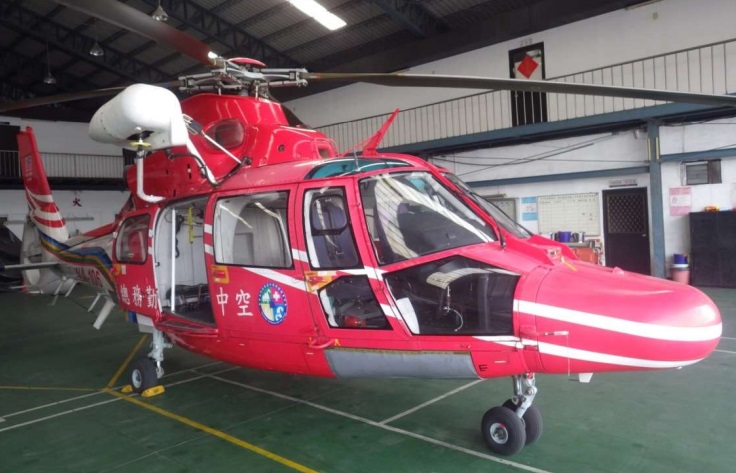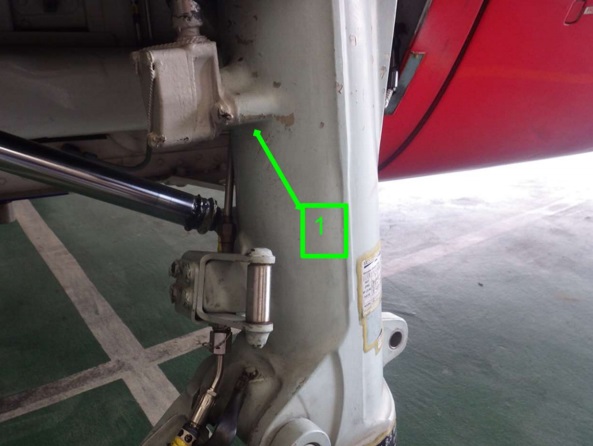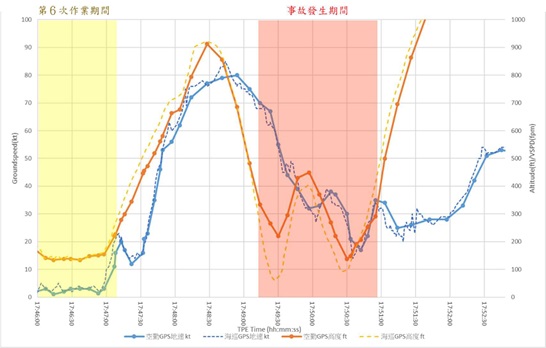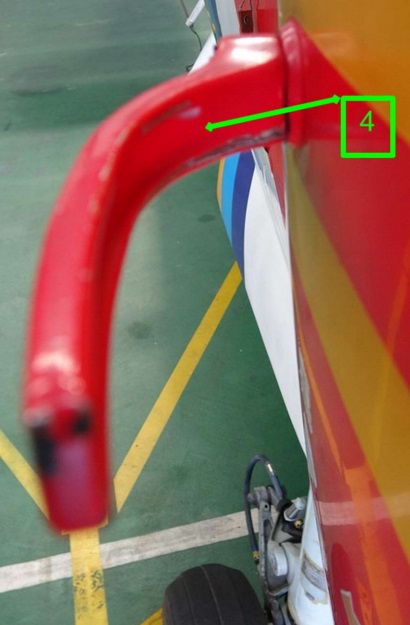Fatal Taiwanese Night SAR Hoist Mission (NASC AS365N3 NA-106)
On 5 December 2018, a National Airborne Service Corps (NASC) Airbus Helicopters AS365N3 Dauphin NA-106, was carrying out a Search and Rescue (SAR) mission to hoist aboard an injured sailor from the bulk carrier W-STAR about 11 nm west of the Peng-Jia Islet when a winchman and patient were both fatally injured (in NASC’s second fatal hoisting accident in 31 days).
Taiwan Transportation Safety Board (TTSB), which recently replaced the Aviation Safety Council (ASC) of Taiwan, issued their safety investigation report on 19 November 2019 (only available in full in Chinese).
History of the Flight
The flight was tasked in daylight. Sunset was 17:03, and civil twilight ended at 17:27. The winchman was lowered to pick up the casualty at around 17:45. While hoisting, the helicopter, which was not equipped with an autohover capability and so unsuitable for might hoisting, started to climb and accelerate.
The hoist cable however snagged on the right landing gear. The photographs in the report do not show any hoist cable guard modifications.
The flight crew decided to reduce speed and descend. They tried to hover over the sea and dipping the personnel on the hoist into the water to release the tension.
The helicopter then continued to fly away from the ship. The TTSB say the crew was unable to maintain visual contact with the hoist and sea surface due to the low ambient light.
The helicopter descended and then climbed twice without noticeable hovering operations over the sea. TTSB determined that the personnel on the hoist hit the water twice at a ground speed of 67 to 45 knots and then 37 to 17 knots in the red zone below).
The winchman…
…suffered from shock and lapsed into a coma while being pulled into the cabin. …organ injuries and serious fractures were also observed, indicating the presence of intense impact force when dipping into the water.
Cable damage was found in several places on the fuselage.
TTSB Analysis
The tasking came about 1 hour before the end of evening twilight, but…
…attempts to abort the mission did not succeed since the crew did not effectively evaluate and communicate the approach of the end of evening twilight and the possible unexpected situation beforehand. In addition, the flight crew unable to contact the on-boarded coast guard by radio, thus continued the hoist operation after the end of evening twilight and increased the risks of mission.
There were neither written restriction served to limit the AS365N helicopter conducting SAR during the night, nor requirement to ask the flight crew abort sea hoist operation after the end of evening twilight…
This…
…led to the flight crew’s attempts to keep on trying the sea hoist operation…because of a sense of duty and commitment…and increased the risks of mission.
TTSB say:
NASC did not specify reasonable operation time prior to the end of evening twilight for those aircraft [that were daytime only capable] and did not develop a mechanism of risk control that authorises its command centre to deploy appropriate aircraft from other regions or hand over to the Taipei Rescue Coordination Centre for reinforcement.
As the helicopter arrived target area and the winchman was lowered on deck, the preparations on board for hoist operation were not ready yet with the patient still inside the cabin, caused the delays and extended the operation time.
TTSB Safety Recommendations
To National Airborne Service Corps, Ministry of the Interior:
- Review aircraft dispatch related rules for explicitly defining written restriction served to limit the AS365N helicopter conducting SAR missions at night, and specifying reasonable operation time prior to the end of evening twilight for those aircraft unfit for SAR at night.
- Enhance the task briefing and crew resource management (CRM) to establish effective evaluation and communication of mission termination for possible scenarios when the task is close to the end of evening twilight.
- Review and enhance the radio communication between crewmembers in the aircraft and rescue staff on the ground to assure steady and effective communication
- Review and enhance communication and coordination between the command centre and vessels requiring SAR support, conveying estimated arrival time and essential preparations necessary.
Safety Resources
- Tail Rotor Pitch Control Loss During Hoisting: Fatal NASC AS365N3 hoisting accident
- Hoist Assembly Errors: SAR Personnel Dropped Into Sea: NASC UH-60M hoist failure
- Taiwan Night Medevac Helicopter Take Off Accident: NASC UH-60M Loss of Control In-flight, high descent rate and water impact
- Fall From Stretcher During Taiwanese SAR Mission (NASC AS365N2 NA-104): on 4 November 2018
- Fatal Fall From B429 During Helicopter Hoist Training
- Marine Pilot Transfer Winching Accident
- Swedish Special Forces SPIES and Military SMS
- ‘Procedural Drift’: Lynx CFIT in Afghanistan
- USAF UH-1H Helicopter Hoist Training Accident: equipment snagged on obstacle
- SAR Crew With High Workload Land Wheels Up on Beach
- Night Offshore Winching CFIT a German HEMS unit attempts night offshore winching
- US Police Helicopter Night CFIT: Is Your Journey Really Necessary?
- Night Offshore Training AS365N3 Accident in India
- HEMS A109S Night Loss of Control Inflight
- US Fatal Night HEMS Accident: Self-Induced Pressure & Inadequate Oversight
- Japanese Rescue B412 Fatal CFIT
- UPDATE 5 March 2020: HEMS AW109S Collided With Radio Mast During Night Flight
- UPDATE 19 April 2020: SAR Helicopter Loss of Control at Night: ATSB Report
- UPDATE 2 May 2020: Sécurité Civile EC145 SAR Wirestrike
- UPDATE 11 May 2020: European Search and Rescue (SAR) Competition Bonanza
- UPDATE 15 May 2021: Military SAR H225M Caracal Double Hoist Fatality Accident
- UPDATE 27 November 2021: TCM’s Fall from SAR AW139 Doorway While Commencing Night Hoist Training
- UPDATE 8 July 2023: BK117 Offshore Medevac CFIT & Survivability Issues
- UPDATE 16 July 2023: SAR AW139 LOC-I During Positioning Flight
The European Aviation Safety Agency (EASA) is sponsoring a safety promotion activity on hoist operations.
SAR Consultancy: Procurement, Tenders, Contacts and In-Service Assurance and Aviation Advice
In September 2017 one European Coast Guard selected Aerossurance to be their new aviation consultants after a competitive tender with 7 bidders. In July 2018 Aerossurance started work supporting a second European Coast Guard with a procurement project. The Aerossurance team is and has supported humanitarian aid agencies, air ambulance charities, military air arms, environmental agencies and blue chip energy companies on other emergency service and special mission aviation projects around the world.
The Tender Trap: SAR and Medevac Contract Design: Aerossurance’s Andy Evans discusses how to set up clear and robust contracts for effective contracted SAR and HEMS operations.







Recent Comments